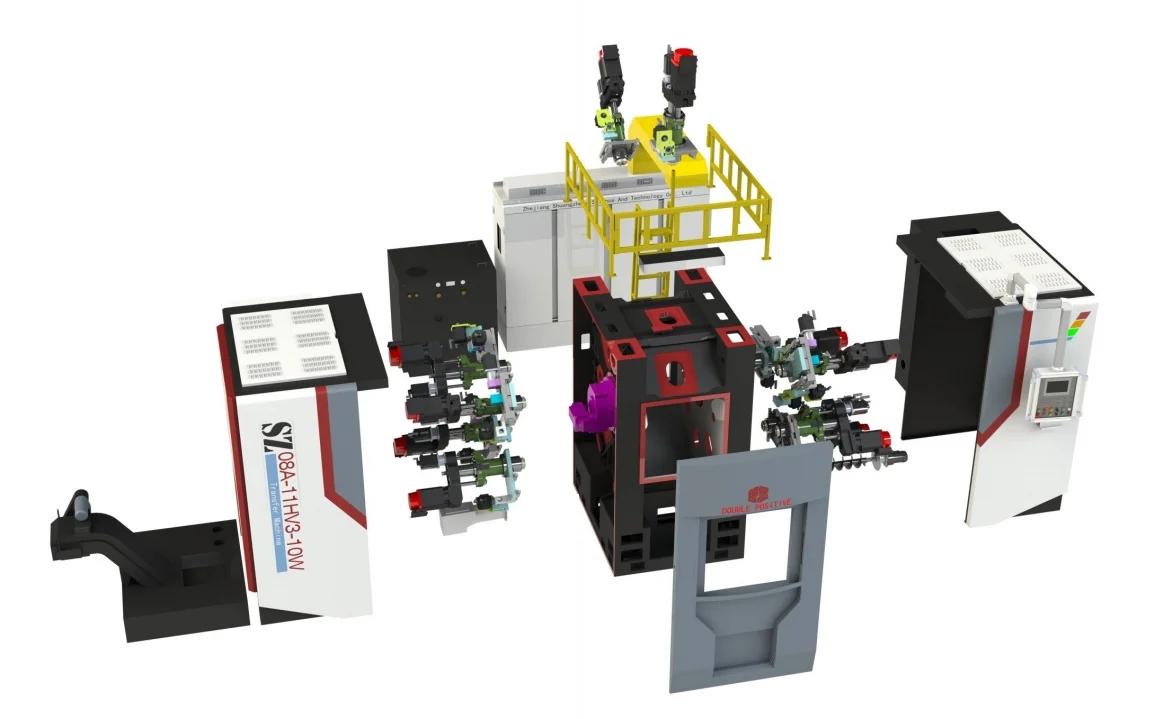In modern industrial production, automatic transfer machine is the key processing equipment, and its normal operation is crucial to ensure production efficiency and product quality. However, like any complex machine, automatic transfer machines can fail. Understanding the basic steps of its maintenance is not only necessary knowledge for maintenance personnel, but also has a profound impact on the entire industrial field.
The first step in automatic transfer machine maintenance is fault diagnosis. This is a process that requires patience and care. Maintenance personnel must first observe the operating state of the machine tool and pay attention to whether there is abnormal noise, vibration or odor. For example, if you hear a harsh friction sound from the spindle of the machine tool, it may mean that there is a problem with the spindle component. At the same time, viewing the alarm information on the operation panel is also key. These alarm messages are like "distress signals" issued by the machine tool, and each code corresponds to a specific type of failure. For example, a particular alarm code may indicate that a particular sensor is faulty or that a particular motor is overloaded.
On the basis of observation, you also need to communicate with the operator. The operator is a witness to the daily operation of the machine and can provide detailed information about when the fault occurs, such as what processing tasks are being performed, whether the machine stops suddenly or becomes abnormal gradually. This helps maintenance personnel more accurately locate the scope of possible failures.
Fault analysis is the key link in the maintenance process. After determining the approximate location of the fault, it is necessary to deeply study the cause of the fault. If the initial judgment is a mechanical problem, it is necessary to consider whether the mechanical parts are worn, loose or stuck. For example, the lead screw of the machine tool may be worn for a long time, resulting in a decrease in processing accuracy. If it is an electrical fault, check whether the electrical components are damaged, whether the line is poorly connected or whether the CNC system is abnormal. For example, poor relay contact may cause the circuit to fail to conduct normally, affecting the normal operation of the machine tool.
Next comes the maintenance implementation phase. For the failure of mechanical parts, if it is a wear problem, you can choose to repair or replace. For some slightly worn parts, it can be repaired by grinding, adjusting, etc. For severely worn parts, such as damaged key parts of the tool exchange device, new parts must be replaced. When repairing electrical faults, professional tools, such as multimeters, should be used to detect the quality of electrical components and replace damaged components. For the line problem, to check whether the line is open, short circuit, timely repair or rewiring. If the numerical control system software is faulty, reinstall the system software or restore backup parameters.
After repairs are completed, testing is essential. First of all, a functional test should be carried out to check whether the various functions of the machine tool are restored to normal. Start the machine and manually operate the movement of each axis to check whether the movement is smooth and accurate. Test the automatic operation mode to see whether the machining program can be executed smoothly and whether the functions of tool exchange are normal. In addition, the accuracy test is also carried out. By machining standard specimens, the processing size and surface quality are measured and compared with the normal machining accuracy to ensure that the geometric accuracy and machining accuracy of the machine tool meet the requirements. Only after all aspects of the test to confirm that the machine is fully restored to normal, can the machine be put back into production.
The basic steps of automatic transfer machine maintenance are interlinked, and each step needs to be carefully treated. This is not only related to the production efficiency and cost of enterprises, but also affects the stability of the entire industrial chain. With the continuous development of the manufacturing industry, the application range of automatic transfer machine is becoming wider and wider, and mastering the correct maintenance steps can make these "industrial sharps" continue to play a stable role in production and create more value for the society.
automatic transfer machine https://www.zjshuangzheng.com/Integrated-Transfer-Machine.html
